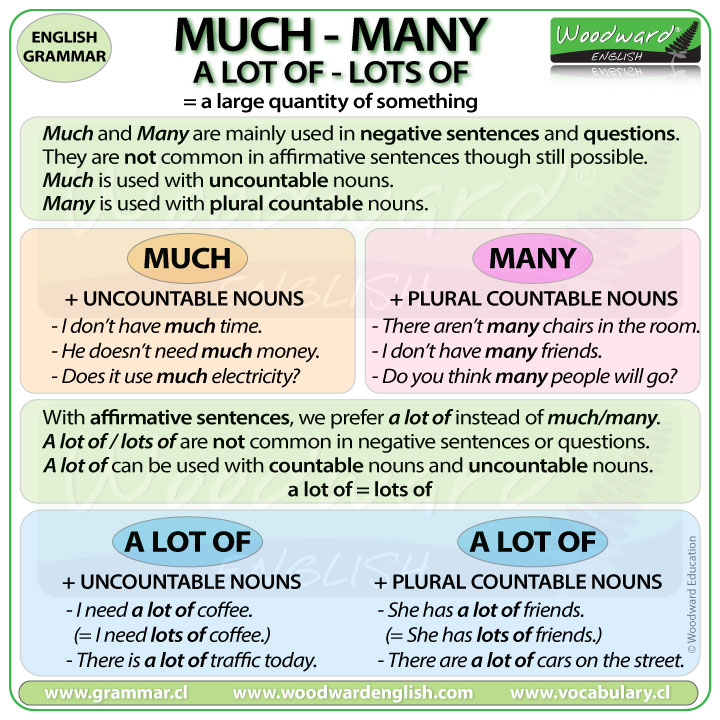Realism and Romanticism: Contrasting Responses to Industrialization and Enlightenment
The emergence of realism in the industrial age
The industrial revolution transforms western society in profound ways, reshape not lonesome economic systems but likewise social structures, urban landscapes, and human consciousness. As factories multiply across Europe and America, as railways connect distant regions, and as cities swell with workers, artists seek new ways to capture this quickly change world.
Realism emerge as a direct response to industrialization, reject the idealized visions of earlier artistic movements in favor of depict life as it really appear. Realist artists and writers embrace the contemporary world with all its flaws, contradictions, and ordinary moments.
Document the new industrial reality
Realist painters like Gustave Courbet abandon classical subjects and mythological themes to focus on the lives of common people. His groundbreaking work” the stone breakers ” epict laborers engage in babackbreakerork, present their struggle without sentimentality or glorification. Likewise, jean fFrançoismillet portray peasants and workers with dignity and humanity in paintings like ” he gleaners “” d ” ” angeAngeles
These artists refuse to avert their gaze from the harsh realities of industrial society. They paint factories belch smoke, crowded urban streets, and the work poor — subjects antecedent deem unworthy of serious artistic attention. By do therefore, they validate the experiences of ordinary people and acknowledge the massive social transformation afoot.
Literary realism and social documentation
In literature, realist authors like Charles Dickens, Émile Zola, and honor de bBalzaccreate detailed portraits of industrial society. Dickens’s novels expose the brutal conditions in factories and workhouses, while zZolas naturalist approach examine how environment and heredity shape human destiny in the industrial age.
Balzac’s ambitious project,” la ccomedichhumane “” tempt nothing less than a comprehensive documentation of french society, include the new industrial classes, the rise bourgeoisie, and those leave fundament by rapid economic change. These writers approach their work virtually as sociologists, observe and record the impact of industrialization on human lives.
Scientific precision and objectivity
Realism reflect the growth cultural emphasis on scientific observation and empirical evidence. Precisely as scientists were make discoveries through careful observation of natural phenomena, realist artists aim to observe and document society with similar precision.
This scientific mindset permeate realist works. Authors provide meticulous descriptions of settings, characters, and social conditions. Painters capture light, texture, and atmospheric conditions with unprecedented accuracy. This commitment to objectivity align with the industrial age’s faith in measurement, classification, and technical expertise.
The middle class perspective
Realism to reflect the rise influence of the middle class, which had gain economic power through industrialization. Unlike aristocratic art that celebrate nobility or religious art that exalt the divine, realist art speak to and about the bourgeoisie.

Source: flowvella.com
Middle class values of practicality, work ethic, and material progress find expression in realist art. The movement’s emphasis on the here and nowadays quite than the transcendent or historical align with the bourgeois focus on tangible results and measurable progress. Realist novels oftentimes explore middle class concerns like social mobility, marriage, and financial security.
Romanticism: a reaction against industrial and enlightenment values
While realism embrace the industrial world, romanticism emerge as a powerful countermovement that question and ofttimes reject industrialization and enlightenment rationality. Romantic artists, poets, and composers look askance at the smoke fill skies and mechanical rhythms of industrial society, find in them a profound threat to human spirit and natural harmony.
The loss of nature and rural life
Romantics mourn the destruction of natural landscapes and traditional rural communities that accompany industrialization. William Wordsworth’s poetry lament how” little we see in nature that’s ours ” s factories and urban sprawl consume the countryside. His fellow lake poets celebrate the unspoiled wilderness as a source of spiritual renewal progressively unavailable to industrial workers confine to cities.
Romantic painters like Caspar David Friedrich and j.m.w. turner create sublime landscapes that emphasize nature’s grandeur and mystery. These works implicitly criticize the industrial tendency to view nature simply as a resource to be exploited. Friedrich’s solitary figures contemplate vast natural vistas suggest an alternative to urban congestion and industrial routine.
Rebellion against mechanical rationality
The enlightenment’s emphasis on reason, measurement, and utility find its practical application in industrial processes that reduce human labor to mechanical repetition. Romantics rebel against this mechanistic worldview, argue that it diminish the richness of human experience.
Mary Shelley’s” fFrankenstein” erve as a powerful romantic critique of scientific hubris and technological overreach. The novel’s tragic monster embody fears about what happen when scientific rationality proceeds without ethical constraints or emotional wisdom. Likewise, the poetry of blBlakend coColeridgearn against the “” ngle vision ” ” rationalism that reduce the world to mere calculation.
The alienation of the individual
Romantics recognize that industrial systems subordinate individual expression to standardized production. Factory workers perform repetitive tasks as interchangeable parts in a larger machine, their unique talents and aspirations irrelevant to the production process.
Against this dehumanization, romantics elevate individual genius, emotion, and imagination. They celebrate artists, poets, and composers as exemplars of authentic human experience. The romantic hero — ofttimes a solitary figure stand against social conventions — represent resistance to the conformity demand by industrial society.
Nostalgia for pre-industrial society
Many romantics look rearwards to medieval or folk traditions as alternatives to industrial modernity. The gothic revival in architecture, the collection of folk tales by the Brothers Grimm, and the historical novels of sir Walter Scott all express nostalgia for pre-industrial social arrangements perceive as more organic and spiritually fulfilling.
This backward glance wasn’t simply escapism but contain an implicit critique of industrial society’s disruption of traditional communities and craftsmanship. Romantics value the medieval craftsman who create unique objects over the factory worker produce identical items. They prefer the organic unity of feudal society to the class conflicts and alienation of industrial capitalism.
Spiritual emptiness of materialism
The industrial revolution accelerates material production while the enlightenment’s secularizing tendencies challenge traditional religious frameworks. Romantics worry that these twin developments werecreatede a spiritually impoverished society focus on consumption and calculation kinda than meaning and transcendence.
In response, romantics seek spiritual experience in nature, art, and emotion. German idealist philosophers like Schelling and Hegel develop alternatives to materialist worldviews. Composers like Beethoven create music that evoke transcendent emotional states. Poets like Shelley and Keats explore moments of intense beauty that suggest realities beyond the material world.

Source: worldatlas.com
The dialogue between realism and romanticism
While realism and romanticism are ofttimes present as oppose movements, their relationship was more complex. Both respond to the same industrial transformation but focus on different aspects and reach different conclusions.
Shared concerns, different responses
Both movements recognize the profound social changes bring by industrialization. Realists document these changes with journalistic attention to detail, while romantics respond emotionally to what was being lost. Both were concern with human welfare, but realists seek improvements within the industrial framework while romantics question whether industrialization itself was a positive development.
Likewise, both movements show interest in ordinary people quite than equitable elites. Realists depict workers and peasants to document social conditions, while romantics celebrate folk culture as an authentic alternative to industrial society. The difference lie not in their subjects but in how they frame these subjects — as social facts or as repositories of pre-industrial wisdom.
Influence on social reform
Despite their differences, both movements contribute to social reform movements address industrial conditions. Realist exposés of factory conditions and urban poverty provide evidence for reformers seek labor regulations and public health measures. Romantic critiques of industrial dehumanization inspire utopian communities and arts and crafts movements that seek to restore meaning to work.
Unitedly, these artistic movements help society process the trauma and possibility of industrial transformation. They offer complementary perspectives that allow people to both understand their change world and imagine alternatives to its worst aspects.
Legacy and continuing relevance
The tension between realist and romantic responses to industrialization continue to shape our relationship with technology and economic systems. Contemporary debates about artificial intelligence, environmental degradation, and digital culture oftentimes replay arguments initiative articulate by these nineteenth century movements.
When we document the social impacts of technological change, we work in the realist tradition. When we worry about technology’s effects on human connection and natural systems, we channel romantic concerns. Both perspectives remain essential for navigate technological transformation.
The industrial revolution that prompt these artistic movements represents the first major wave of mechanization and standardization. As we face subsequent waves of technological change — automation, artificial intelligence, genetic engineering — the insights of both realists and romantics help us balance progress with preservation, efficiency with humanity, and innovation with wisdom.
Find balance in contemporary society
Peradventure the virtually valuable lesson from study these movements is that neither complete acceptance nor total rejection of technological change serve society advantageously. The realist commitment to see things as they’re prevented naive utopianism, while the romantic insistence on human values beyond efficiency guards against technocratic reductionism.
As we navigate our own period of rapid technological change, we might aim for a synthesis that combine realist clarity about current conditions with romantic vision of what make life meaningful. This balanced approach allow us to harness technology’s benefits while preserve the human and natural values that give those benefits mean.



